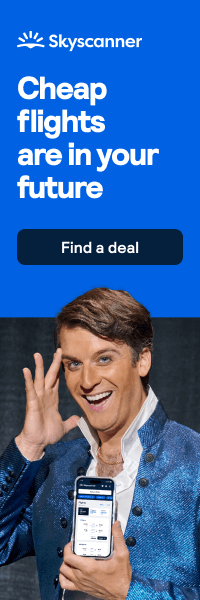In today's highly competitive talent market, a company's success is increasingly tied to its ability to attract, retain, and motivate its workforce. For C-suite leaders and financial executives, employee benefits are no longer a mere line item on a budget; they are a critical strategic asset. The old model of a one-size-fits-all benefits package is rapidly becoming obsolete, replaced by a demand for offerings that are flexible, personalized, and truly add value to an employee's life.
This evolution is not accidental. It is the result of a deliberate, data-driven effort within the insurance industry to understand the modern workforce and design products that meet their specific needs. Understanding this process, and the resulting offerings, is essential for any leader seeking to build a resilient and competitive organization.
The New Talent Imperative
The professional landscape has shifted dramatically over the past decade. Employees, especially those in younger generations, are not just looking for a paycheck. They are seeking a holistic value proposition that includes career growth, a supportive work environment, and benefits that offer real-world protection and financial security for themselves and their families.
Companies that fail to adapt their benefits strategy risk falling behind. A dated benefits package can lead to higher employee turnover, difficulty in recruiting top-tier talent, and a decline in overall employee morale and productivity. To counter this, forward-thinking organizations are recognizing that their employee benefits portfolio must be as dynamic and innovative as their core business.
How Product Development Is Changing the Game
The transformation in employee benefits is a direct result of a strategic approach to product development within the insurance sector. Insurers are moving away from standardized products and are instead focusing on creating solutions that address the specific pain points and desires of both employers and employees.
This new approach involves:
- Customization: Moving beyond a single group plan, insurers are developing platforms that allow employers to offer a wider array of choices, empowering employees to select benefits that are most relevant to their personal situations.
- Technology Integration: Modern benefits are often delivered through intuitive digital platforms, making it easier for employees to enroll, manage, and understand their coverage. This improves the overall employee experience and reduces the administrative burden on HR teams.
- Holistic Wellness: The focus has expanded beyond traditional health and dental to include mental well-being, financial literacy, and other support services that contribute to an employee’s overall health and productivity.
This strategic evolution is what allows a company to move from simply providing benefits to truly investing in its people.
Modernizing Your Offerings with Evolving Life Insurance Options
A perfect example of this transformation is in the realm of life insurance. For decades, group term life insurance was the standard. While it remains a valuable part of any benefits package, a new generation of life insurance options is now available that provides greater flexibility and value.
These modern options are designed to address a wider range of employee needs and include:
- Voluntary Life Insurance: This allows employees to purchase additional coverage beyond the basic employer-provided amount. It offers a level of personalization that is highly valued, as employees can tailor the coverage to their family’s specific financial needs.
- Spousal and Child Coverage: Expanding on the core benefit, many modern plans allow for employees to secure affordable life insurance for their spouses and children, providing a more comprehensive financial safety net for the entire family.
- Portable Coverage: A key innovation is the ability for employees to take their life insurance policy with them if they leave the company. This portability eliminates the risk of losing coverage during a career transition and adds a significant layer of security for the employee.
- Supplemental Plans: These plans provide employees with the opportunity to add riders for critical illness or long-term care, offering a more robust and personalized level of protection that directly addresses their specific concerns about future health and financial stability.
By offering these choices, companies demonstrate a genuine commitment to their employees’ long-term well-being and financial security, which in turn fosters loyalty and engagement.
A Strategic Framework for C-Suite Leaders
For C-suite leaders, integrating these modern benefits into your corporate strategy requires a few key steps:
- Conduct a Benefits Audit: Regularly review your current benefits package to assess its competitiveness. Are your offerings aligned with what top talent in your industry expects? Are they providing a positive return on investment in terms of employee retention and morale?
- Partner with Strategic Advisors: Working with a trusted advisor who understands both the insurance market and your corporate objectives is crucial. These advisors can help you navigate the complexities of modern product development and build a benefits package that is both cost-effective and highly attractive.
- Align Benefits with Your Brand: Your benefits package is an extension of your company’s brand and values. If your brand is about innovation and forward-thinking, your benefits should reflect that. Offering flexible and modern life insurance options signals to both current and prospective employees that you are an employer that cares about their future.
- Communicate the Value: A robust benefits package is only effective if employees understand and appreciate its value. Implement a clear and ongoing communication strategy to educate your workforce about their benefits and how to use them effectively.
In the battle for talent, a company’s ability to offer compelling and relevant employee benefits can be a decisive factor. The evolution of product development within the insurance sector has created a new landscape of flexible and valuable life insurance options that can serve as a powerful tool for C-suite leaders.
By moving beyond traditional offerings and strategically investing in a modern benefits package, you are not just ticking a box. You are building a more resilient, attractive, and competitive organization. This proactive approach to employee well-being is not simply a perk; it is a fundamental component of a sustainable and profitable corporate strategy.













